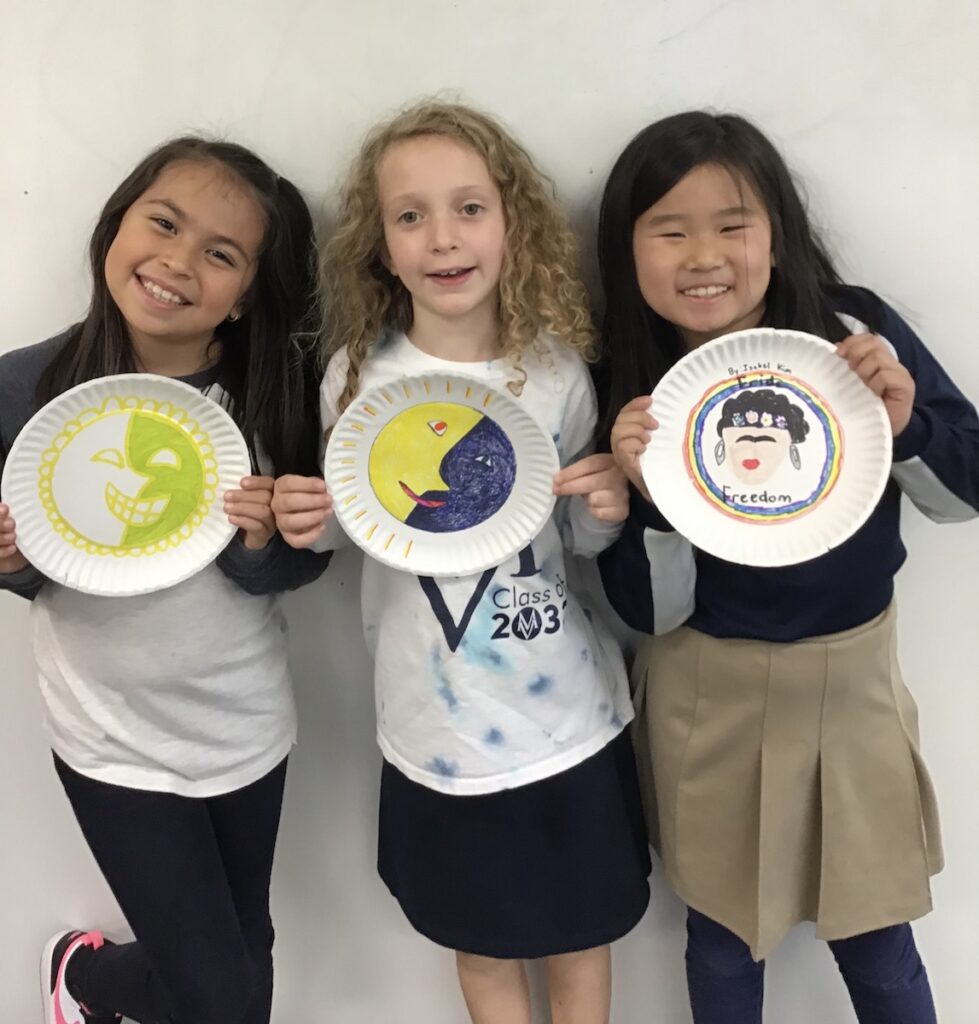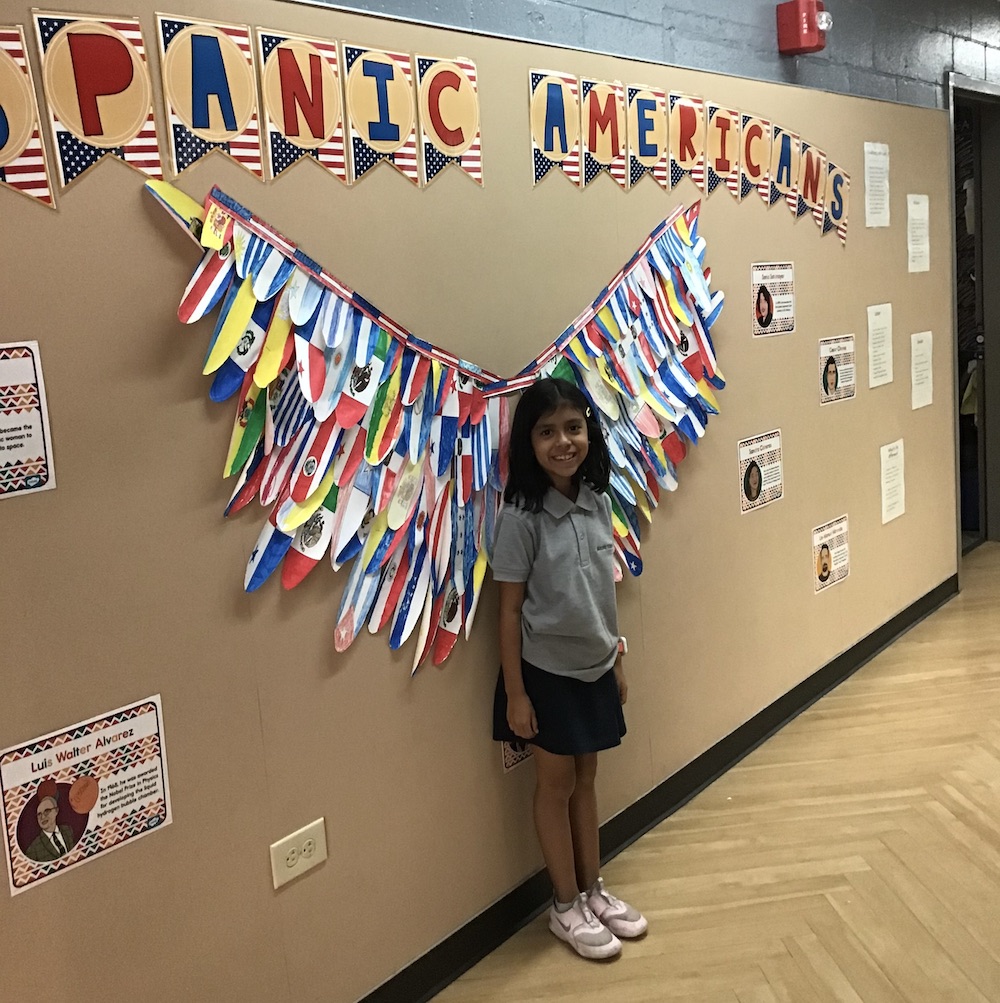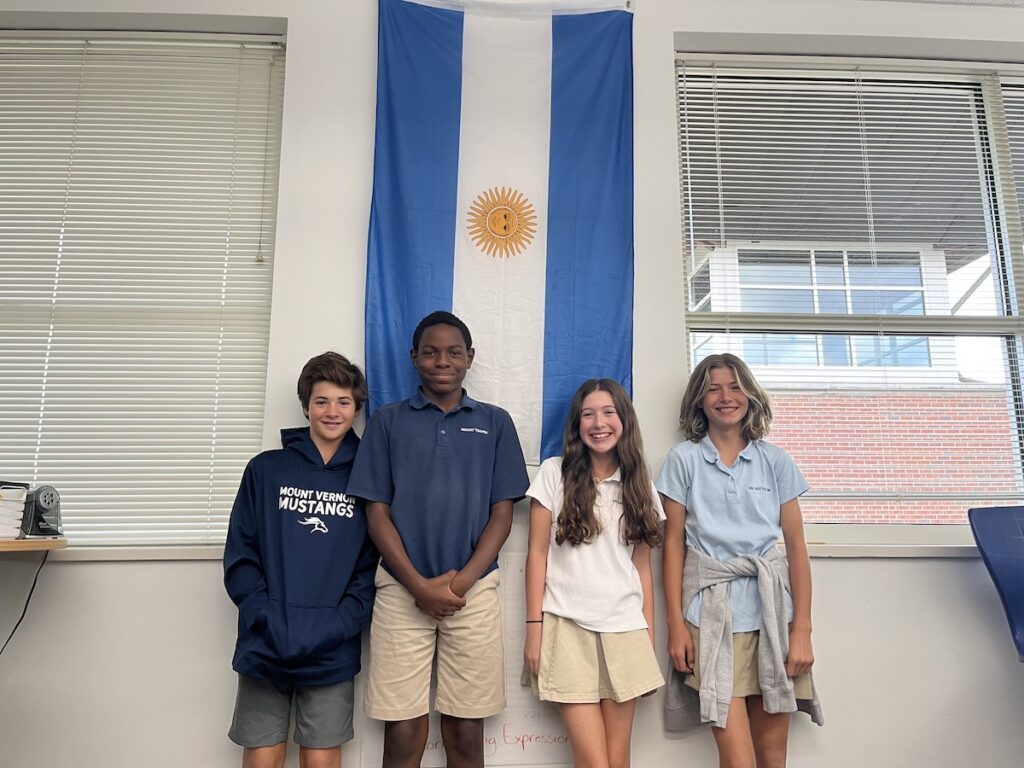National Hispanic Heritage Month is celebrated from September 15 to October 15 in the United States and recognizes the contributions and influence of Hispanic Americans to the history, culture, and achievements of our country.
At Mount Vernon, we celebrated in a variety of ways. Spanish language teachers designed specific projects focusing on Hispanic culture, while other teachers brought famous Latinos in history to the forefront. Additionally, students and teachers with Hispanic heritage shared their personal stories, giving a voice to their ancestors.

Lower Campus Spanish teachers, Lily Catano and Andrea Guerrero, of Colombian and Mexican Heritage, collaborated to bring their respective cultures to the School. During the first week of Hispanic Heritage month, their classes colored flags of Spanish-speaking countries while learning about the cultures of each. In the hallway outside of their shared classroom, Ms. Catano and Ms. Guerrero hung the flags up along with photos and descriptions of famous Hispanic artists, scientists, and academics to introduce the student to prominent and influential figures.

Ms. Guerrero invited Yohan O, Class of 2031, Sophia R, Class of 2033, and Harper C, Class of 2031 to the stage during Lower School Chapel on Wednesday, September 21. Together they represented Puerto Rico, Dominican Republic, and Panama. This example showed everyone at Chapel that, “Not everybody of Hispanic heritage looks the same, not everybody speaks the same. A common mistake is for people to call Hispanic or Latinx people “Spanish”. Spanish refers to the language or people who were born in Spain or their family is from Spain. Not all Latinx people come from Spanish descent. Some Latinos have ancestry from Italy, Portugal or from indigenous people.” Chief IDEA Officer Stacey Lee explains, “as our community intentionally works to develop cultural proficiency with and for our students, lessons like this that increase capacity for accepting differences are tremendously important.”
Middle School Spanish teacher Robert Chiapetta assigned a project in which students could choose from a group of influential Hispanic men and women to create presentations about their stories. Among the many figures students could choose from, some chose Lin-Manuel Miranda, the writer of the Broadway Musical, Hamilton. Others researched Ellen Ochoa, the first Hispanic American astronaut to go to space. And Cesar Chavez, a noteworthy activist for securing union rights for migrant farm workers during the 1960s.

The Upper School IDEA team, Sharon Burnett and Chris Byron, Head Prefect Lyndsey Franklin, Wellness and Spiritual Life Prefect, Joe Srinivasan, and Spanish foreign exchange student Julie Escoba have recently begun each morning by speaking The Lord’s Prayer in Spanish and sharing fun Hispanic Heritage Month fact:
- ALEXANDRIA OCASIO-CORTEZ went from being a young Puerto-Rican from the Bronx to the youngest woman ever to be elected to Congress, representing New York’s 14th district.
- HELEN RODRIGUEZ-TRÍAS, a Puerto Rican Physician who was the First Latina Director of the American Public Health Association, and a recipient of the Presidential Citizens Medal.
- JORGE RAMOS, the American Journalist who was dubbed Most Influential News Anchor in the U.S., within Spanish language news.
- JUSTICE SONIA SOTOMAYOR, a Puerto Rican U.S. Supreme Court Judge who was the First Latina to serve on the Nation’s highest Court.
- ROBERTO CLEMENTE, the Puerto Rican baseball player who was the first Hispanic inductee into the Baseball Hall of Fame.
Upper School Spanish Teacher Thamara Trematerra’s Spanish 2 class is working on presentations about the traditional clothing of various Hispanic countries. Mollie Martin, Class of 2026, chose to research Uruguay. “I found out that gauchos, colorful ponchos and broad brimmed hats are traditionally worn. One cool thing I discovered was that certain colors of gauchos match different types of music played at parties and festivals.” Many students have built connections between their own culture and the cultures they are studying. For example, Mollie discovered that people in Uruguay wear dark reds, browns, and greens much like people in America do. Ms. Lee points out that “Investigating color and type of clothing supports the critical element of exposure. The step further, into investigating the purpose behind the clothing and inspiration behind the color leads to deep understanding.”

Celebrating Hispanic Heritage Month helps foster compassion for all cultures and people. Ms. Catano wants to extend a challenge to the community, “Have more kindness. Have more empathy. Don’t ignore the world outside.” Learning about different kinds of cultures is a way of showing respect for them. Ms. Guerrero wants everyone to share a connection, “Not only do we want to help kids learn another language, we want to help our students connect with others who may be different from them and we think that exposing them to another language and culture can help them grow comfortable and embrace differences.”
